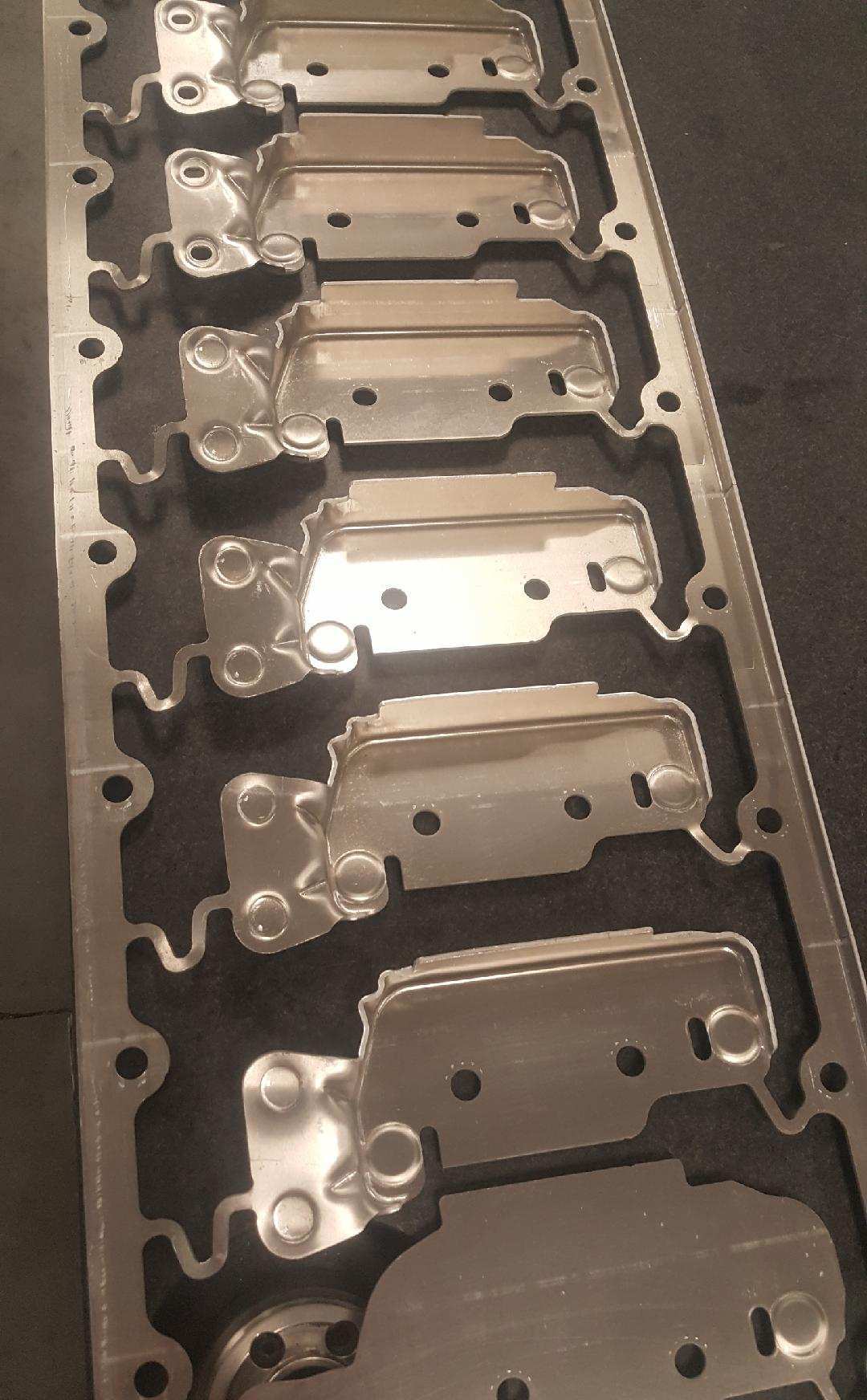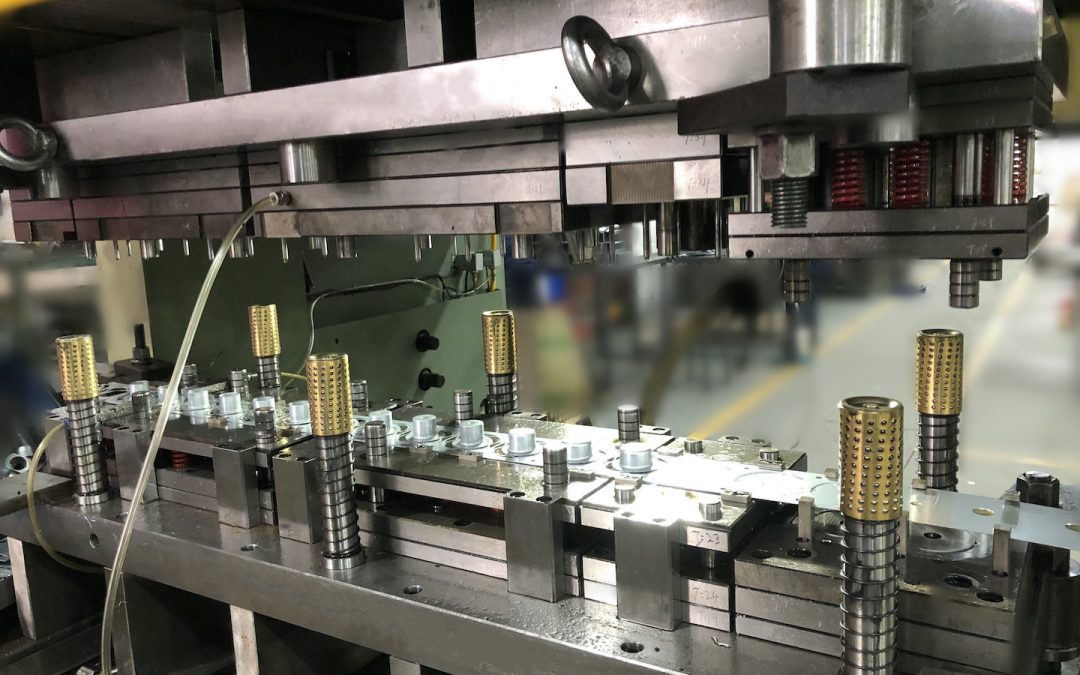Why Metal Stamping is Necessary for Developing Sturdy and Intricate Components
Wiki Article
Advanced Techniques in Steel Stamping for Accuracy Production
As sectors constantly require better tolerances and elaborate layouts in their metal elements, the mission for innovative techniques in metal marking has actually increased. From the utilization of sophisticated multi-stage marking procedures to the integration of advanced automation innovations, the landscape of steel stamping is undertaking a profound improvement.Advanced Multi-Stage Stamping Procedures
Discussing the ins and outs of advanced multi-stage stamping processes discloses the innovative strategies utilized in modern-day manufacturing practices. Metal Stamping. Multi-stage marking is a complex process that includes numerous actions to change a flat sheet of metal right into a final stamped product. Making use of modern dies, where different operations are done at each phase of the marking procedure, permits for high accuracy and performance in the manufacturing of intricate metal partsThroughout the initial stages of multi-stage stamping, the level metal sheet is fed into the marking press, where a series of passes away are used to reduce and shape the product. Subsequent phases involve added creating, flexing, and punching operations to further improve the component. Each phase is thoroughly developed to construct upon the previous one, causing the creation of complex geometries with tight tolerances.
Advanced multi-stage marking procedures need a high level of experience and accuracy to guarantee the quality and uniformity of the stamped components. By utilizing sophisticated equipment and tooling, makers can produce a wide array of steel parts with effectiveness and accuracy.
Accuracy Tooling Innovations
Precision tooling developments have actually changed the metal marking market, enhancing performance and high quality in manufacturing procedures. These developments have actually considerably impacted the method metal elements are produced, bring about higher accuracy and consistency in the last items. One essential technology is the advancement of computer system numerical control (CNC) modern technology in tooling style and fabrication. CNC systems enable elaborate layouts to be equated straight right into tooling, making sure accuracy and repeatability in the marking procedure.Additionally, the assimilation of sensors and real-time monitoring capabilities in precision tooling has actually allowed makers to identify and address issues promptly, reducing downtime and decreasing scrap rates. By integrating wise innovation into tooling, operators can optimize parameters such as pressure, speed, and alignment throughout the marking procedure, causing enhanced item high quality and boosted performance.

Automation in Steel Stamping
The advancement of accuracy tooling developments in the steel marking sector has actually led the way for considerable developments in automation, changing the manufacturing landscape towards enhanced effectiveness and performance. Metal Stamping. Automation in steel marking entails making use of innovative equipment and robotics to perform various tasks traditionally executed by human operators. This shift towards automation provides various advantages, consisting of enhanced accuracy, faster production cycles, and reduced labor costsOne trick facet of automation in steel stamping is the implementation of computer system numerical control (CNC) systems, which enable specific control over the stamping process. CNC modern technology permits the development of complicated and elaborate metal get rid of consistent top quality. In addition, automated systems can be configured to run continuously, resulting in higher result rates and shorter preparations.
Moreover, automation improves workplace security by lowering hands-on handling of heavy products and lessening the risk of crashes (Metal Stamping). As manufacturing sectors continue to welcome automation, the future of steel stamping holds wonderful guarantee for even higher performance and development
High-Speed Stamping Methods

Among the key benefits of high-speed stamping techniques is the capability to generate a huge volume of parts in a shorter amount of time compared to standard marking approaches. This enhanced performance not just permits producers to satisfy limited manufacturing deadlines however additionally allows cost financial savings through economies of range. Additionally, high-speed marking can help in reducing material waste by maximizing the material usage throughout the stamping procedure.
In addition, high-speed stamping techniques frequently integrate ingenious features such as fast die adjustment systems and real-time tracking capabilities, better improving the total effectiveness and flexibility of the metal stamping procedure. As modern technology continues to advance, high-speed stamping is anticipated to play a vital duty in driving read here the future of accuracy manufacturing.
High Quality Control in Stamping Procedures
Reliable quality assurance measures are essential for ensuring the dependability and uniformity of metal marking operations. Quality assurance in marking operations entails a series of systematic procedures focused on detecting and protecting against flaws in the manufactured parts. One important aspect of top quality control in steel stamping is the use of innovative assessment methods such as optical evaluation systems and coordinate measuring equipments (CMMs) to confirm the dimensions and resistances of stamped parts.In addition, high quality control measures in stamping procedures usually include the implementation of analytical process control (copyright) approaches to keep track of the manufacturing process in real-time and ensure that it continues to be within acceptable limitations. By evaluating information and recognizing fads, producers can proactively resolve any variances from the desired high quality standards.
Moreover, quality assurance in metal stamping operations additionally involves complete product screening to ensure that the raw materials utilized helpful resources fulfill the required specs for the marking process. This may consist of performing material hardness tests, tensile toughness tests, and dimensional examinations to guarantee the quality and integrity of the stamped elements. On the whole, implementing robust quality assurance measures is essential for attaining high-quality stamped parts regularly.
Conclusion
In conclusion, progressed techniques in steel marking play an important role in accuracy production processes. Through multi-stage stamping processes, cutting-edge tooling solutions, automation, high-speed techniques, and extensive high quality control procedures, suppliers can attain greater degrees of accuracy and efficiency in their procedures. These improvements in metal stamping modern technology have actually allowed companies to produce intricate get rid of limited resistances, eventually resulting in improved item high quality and customer contentment in the production industry.Report this wiki page